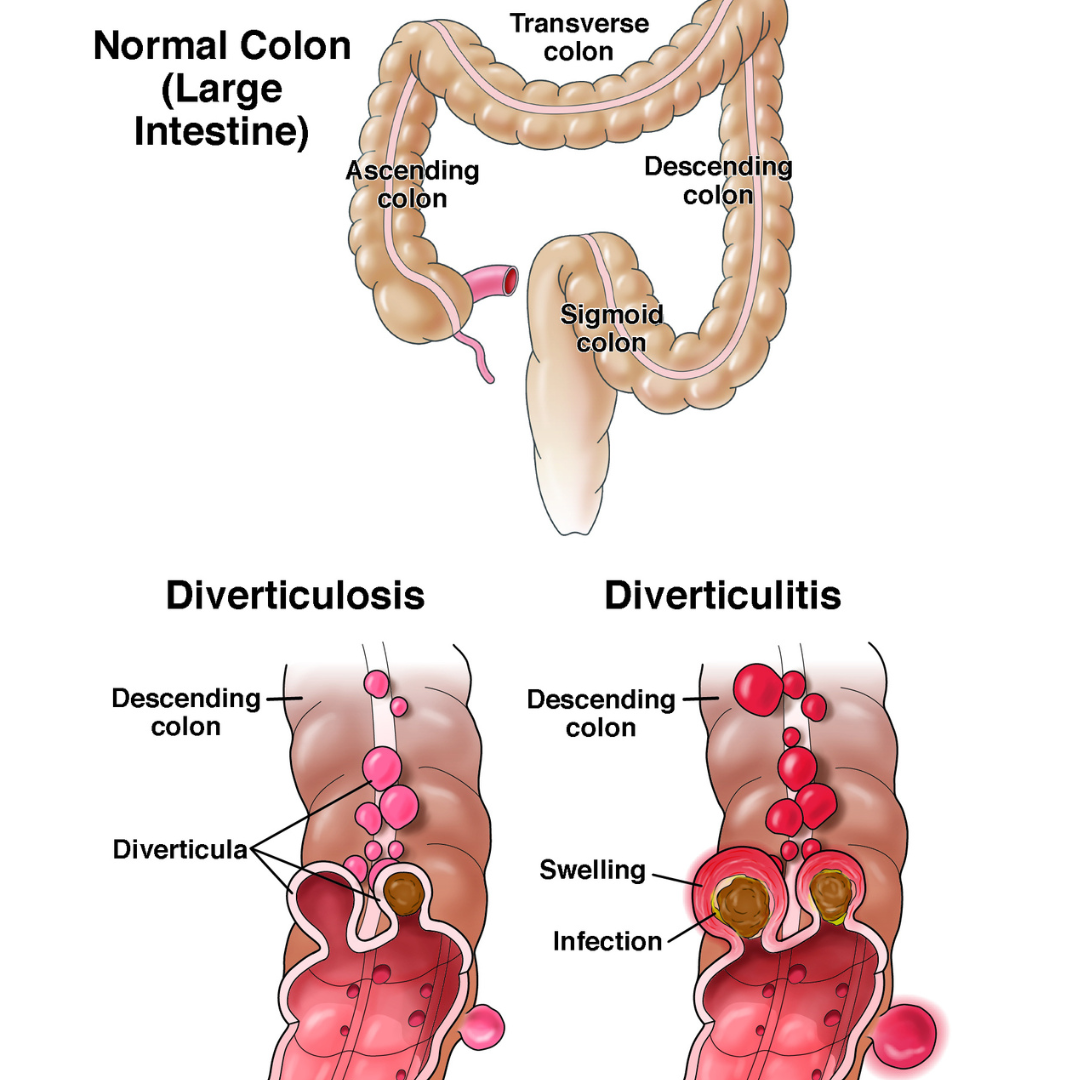
Diverticular Disease: Overview and Management
Definition
Diverticular disease refers to conditions involving diverticula, saclike mucosal pouches in the gastrointestinal (GI) tract. Diverticulosis is the presence of one or more diverticula, while diverticulitis is their inflammation or infection. Diverticula can be true (involving all layers of the GI wall, e.g., Meckel’s diverticulum) or false (only mucosa and submucosa, e.g., colonic diverticula).
Causes
Diverticula form due to increased intraluminal pressure pushing mucosa through weak points in the bowel wall. Contributing factors include low-fiber diets, obesity, smoking, sedentary lifestyles, and use of NSAIDs. Genetic predisposition and colonic wall alterations also play roles.
Symptoms
• Diverticulosis: Typically asymptomatic but may cause bloating, abdominal pain, or constipation.
• Diverticulitis: Presents with left lower abdominal pain, fever, nausea, or complications like abscesses or perforation.
• Diverticular bleeding: Causes painless rectal bleeding, often brisk.
Complications
• Diverticulitis: Can result in abscesses, fistulas, or bowel obstruction.
• Diverticular bleeding: A common cause of lower GI bleeding.
• Segmental Colitis Associated with Diverticulosis (SCAD): Chronic colonic inflammation linked to diverticula.
Diagnosis
• Diverticulosis: Often incidentally detected during colonoscopy, CT, or barium enema.
• Diverticulitis: Diagnosed using abdominal CT; colonoscopy follows resolution to exclude malignancy.
• Diverticular bleeding: Evaluated with colonoscopy, CT angiography, or radionuclide imaging.
Treatment
• Asymptomatic Diverticulosis: No treatment required.
• Diverticulitis: Managed based on severity. Uncomplicated cases may not require antibiotics, while severe cases need hospitalization and possibly surgery.
• Diverticular Bleeding: Usually resolves spontaneously; endoscopic or angiographic intervention may be needed.
Prevention
Regular exercise, high-fiber diets, and avoiding smoking or NSAIDs may help reduce risk. Nuts and seeds are no longer considered harmful for diverticula.
Key Points
Diverticular disease is increasingly common with age, particularly among those over 70. Most cases are asymptomatic, but complications like diverticulitis and bleeding require timely intervention. Individualized treatment is essential for optimal outcomes.
Let me know if you’d like to expand or adjust any part!

